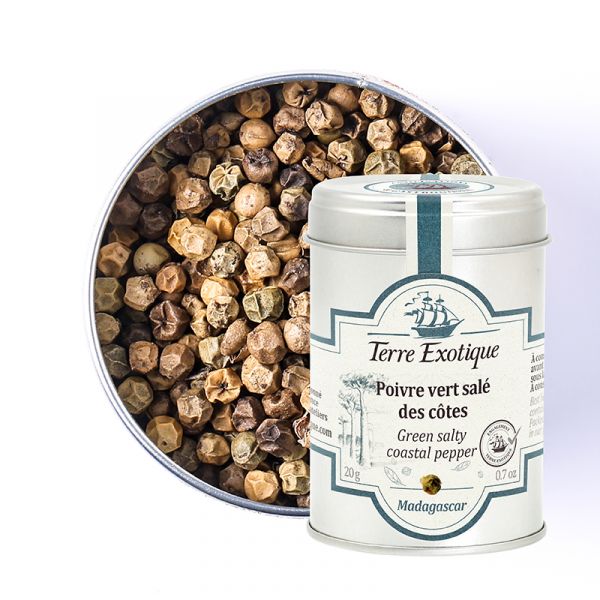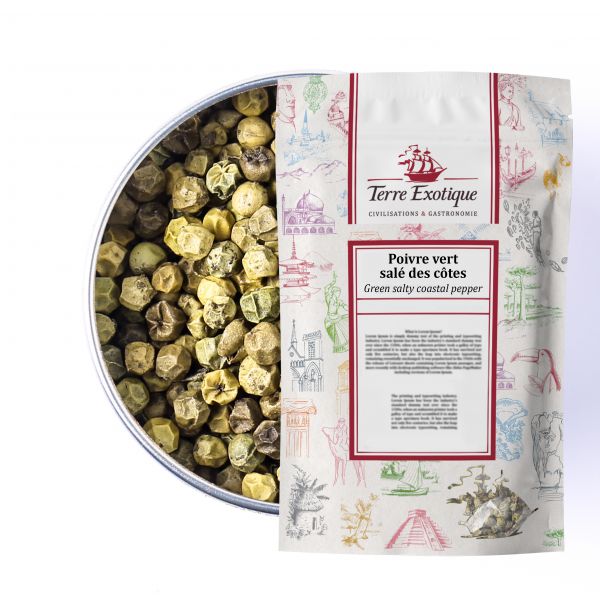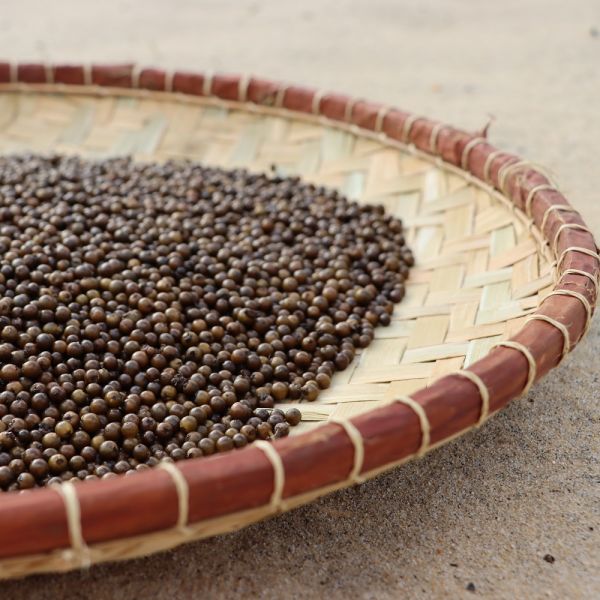





How to use Green salty coastal pepper?
Some suggestions for using Green salty coastal pepper in your cuisine
Thanks to its aromatic profile, this is the ideal pepper to accompany all your dishes as well as your appetizers. This crunchy and robust-grained pepper fits perfectly with homemade tapas or toasts for your gatherings with friends. For the more adventurous, you can even enjoy it as is, like a spicy peanut!
It pairs wonderfully with all meats and can also be combined with vegetables, starches, and salads. It will elevate your sauces and marinades with zest and enhance your fish and seafood.
How to use Green salty coastal pepper
It can be ground using a mortar and pestle or with a mill. To fully enjoy the flavors of Green salty coastal pepper, add it at the last moment, just before serving.
The flavors of Green salty coastal pepper
This Green pepper stands out from traditional green peppers (usually freeze-dried and dehydrated) due to its crunchiness, spiciness, and salty taste ... something to fall in love with! Its vegetal and fruity notes will pair wonderfully with a tournedos in cream and green pepper, a fillet of white fish, veal, or fresh goat cheese toast.
Green salty coastal pepper and its botany
Botanical origin of Green salty coastal pepper
Green salty coastal pepper comes from the east coast of Madagascar. It is hand-harvested from February to May when the clusters are still immature. All production stages are entirely manual and carried out by the skilled hands of Malagasy villagers.
Green salty coastal pepper belongs to the Piper nigrum family, a vine that grows on a support and can reach a height of up to 4 meters. Like all Piper nigrum varieties, this pepper requires a tropical climate with high temperatures and humidity.
There are 4 colors of Piper nigrum: green pepper, black pepper, red pepper, and white pepper.
What differentiates white, black, red, and green peppers?
The difference primarily lies in the degree of maturity at which the pepper is harvested, which significantly impacts its aromatic characteristics:
- Green pepper: it is picked before maturity, giving it fresh and lemony notes. It is generally preserved in freeze-dried, dehydrated, or brined form. In contrast, Green salty coastal pepper is first placed in brine and then dried;
- Black pepper: it is harvested just before full maturity, then sun-dried, giving it spicy and robust aromas;
- Red pepper: it is picked at optimal maturity, with its pericarp preserved to maintain its red color and spicy flavor;
- White pepper: it is also harvested at optimal maturity, then dried and rid of its pericarp, making it less spicy than black pepper.
History of Green salty coastal pepper
At the origins of Green salty coastal pepper
In the early 20th century, Frenchman Émile Prudhomme introduced pepper cultivation to Madagascar after a mission to Java. As the Director of the National Institute of Colonial Agronomy, he wrote in 1899, "Serious attempts to cultivate the pepper vine in Madagascar have not yet been made, but there is reason to believe in the success of this vine along most of the East Coast."
It was initially introduced on Nosy-Be, an island off the northwest coast of Madagascar, before gradually expanding in the Sambirano region of Madagascar.
| Allergen | Absence |
|---|---|
| Native country | Madagascar |
| Genus and botanical species | Piper nigrum |
| Ingredients | green pepper, salt, citric acid. |
| Nutritional Info | / |
| TRACES EVENTUELLES D'ALLERGÈNES | céleri, sésame, moutarde, fruits à coques. |
 Français
Français 



